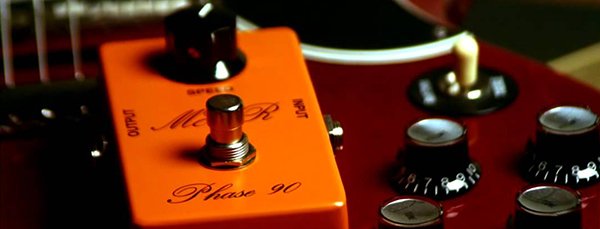Phaser shifter pedals have been an integral part of the sound of many guitarists since the 1970s. With its distinctive swirling, whooshing sound, the phaser is an effect that can add depth, dimension, and movement to your guitar tone. Whether you’re an amateur or an experienced guitarist, this comprehensive guide will help you discover the magic of phaser pedals and take your playing to the next level. It will also highlight some of the best phaser pedals on the market, including the versatile and feature-packed boss phase shifter ph-3. So dive in and explore the world of phaser pedals!
History of Phaser Pedals
Phaser pedals first appeared in the 1970s, with the original design by David Cockerell for Electro-Harmonix. The pedal became popular in the 1970s and 1980s, used by guitarists like David Gilmour, Eddie Van Halen, and Brian May. The pedals use a series of all-pass filters to produce a sweeping effect that moves up and down the frequency spectrum. Over the years, they have evolved to include different types and features, from vintage analog circuits to digital modelling.
Their Different Types
There are several types of phaser pedals available, each with its own unique sound and features. The most common types include:
- Analog Phaser: These pedals use analog circuitry to produce a warm, vintage sound that many guitarists love. Analog phasers typically have a simple control layout with speed and depth knobs, and some models include a feedback or resonance control for more customisation.
- Digital Phaser: Digital phasers use digital signal processing (DSP) to produce a more precise and customisable effect. Digital phasers often have more control options than analog pedals, including multiple stages, waveform shapes, and modulation types.
- Uni-Vibe: The Uni-Vibe is a unique type of phaser originally designed to mimic the sound of a rotating speaker. It produces a pulsating, swirling effect that is different from traditional phasers and is often used in psychedelic and funk music.
- Multi-Modulation: Some pedals combine phasers with other modulation effects, such as chorus or flanger. These pedals allow for even more personalisation and versatility in your guitar tone.
Using a Phaser Pedal
Phaser pedals are typically placed after the distortion or overdrive pedals in the signal chain. This allows the phaser to modulate the distorted signal, creating a more complex and interesting sound. When using a phaser pedal, start with the speed and depth controls set to low settings and gradually increase them until you find a sound that works for your playing style and music. Experiment with different settings and pedal combinations to find your ideal sound.
Exclusive Tips for Getting the Most Out of Phaser Pedal
Here are a few essential tips for getting the most out of your phaser pedal:
- Use the feedback or resonance control to add more depth and complexity to the effect.
- Try using an expression pedal to control the speed or depth of the phaser in real-time.
- Experiment with different pedal combinations to create unique sounds. For example, combining a phaser with a delay pedal can create a spacey, ambient sound.
- Use the phaser sparingly to avoid overpowering your guitar tone. It’s easy to go overboard with a phaser, so use it judiciously to create a subtle and tasteful effect.
- Experiment with different pickup settings to find the sweet spot for your phaser. Some pickups may work better with higher or lower frequencies, so try different combinations to find the right sound.
- Record your playing and experiment with different phaser settings in the mix. Sometimes a phaser may not sound great on its own but can work well in the context of a mix.
Best Phaser Pedals on the Market
While there are many great phaser pedals on the market, the boss phase shifter ph-3, for example, stands out for its versatility and features. As a digital phaser pedal, it offers multiple stages, waveform shapes, and a tap tempo function. Guitarists can create various sounds, from classic to modern, and experiment with different settings to find their ideal phaser tone. Brands like Boss PH-3 are excellent options for guitarists who want a versatile and reliable phaser pedal.
Conclusion
In conclusion, phaser pedals are a great way to add depth, dimension, and movement to your guitar tone. Whether you’re looking for a warm, vintage sound or a modern, digital effect, there are plenty of phaser pedals on the market to choose from. By experimenting with different pedals, settings, and pedal combinations, you can find your ideal phaser sound and take your playing to the next level.


